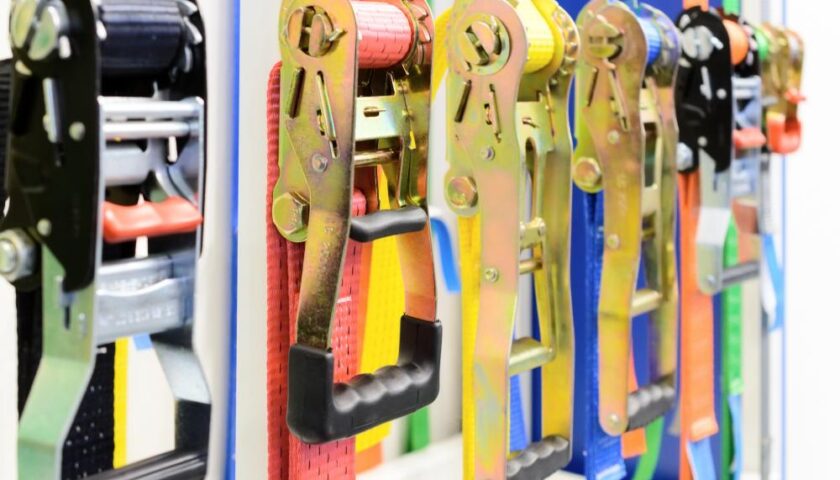Tie-down straps made from nylon webbing material are versatile pieces of kit that can last for many years if you take care of them. They can still last for quite a while even if you don’t, but why take your chances? Caring for tie-down straps doesn’t require much effort. You might just as well make that effort to get the longest possible life from your investment.
The tips offered in this post apply to both ratchet and cam straps. The main difference between the two types of straps is how they are secured at the loose end. A ratchet strap utilizes a traditional ratchet while a cam strap relies on a cam buckle. According to the makers of Rollercam.com, cam straps are ideal for consumer applications while ratchet straps are great for commercial trucking.
Tip #1: Utilize Edge Protectors
As strong as tie-down straps are, their Achilles heel is their susceptibility to sharp edges. Nylon webbing can be easily lacerated on sharp corners or edges. Therefore, if there is any chance that your straps could be cut, make use of edge protectors.
An edge protector is anything that sits between a sharp edge and the webbing strap. Plastic and metal edge protectors can be purchased online or in most retail outlets where you would purchase the straps themselves. If you prefer the DIY option, small pieces of cardboard or plastic will do the trick.
Tip #2: Practice Proper Storage
Nylon webbing is pretty resistant to dirt, debris, and certain chemicals. Nonetheless, proper storage can prolong strap life considerably. It begins with never storing straps away when they are wet. Why? Because wet straps are prone to mold and mildew. Likewise for wet ratchets and buckles.
Cam straps with plastic buckles are especially susceptible to mold and mildew. You want to avoid this problem at all costs. Once mold and mildew take root, they are difficult to get rid of.
Tie-down straps should also be stored in a cool, dark place. Though the straps are designed to withstand temperature extremes and UV rays, they aren’t completely impervious to damage. Storing in a cool, dark place limits temperature and UV exposure, thereby prolonging life.
Tip #3: Inspect on Every Use
Next, inspect your tie-down straps every time you use them. You are looking for any possible defects that could lead to trouble down the road. Just know this: wear and tear on the strap itself means it is nearing end of life. There isn’t a whole lot you can do once webbing material starts falling apart.
As for ratchets and cam buckles, regular inspections can alert you to normal wear and tear that you can address before it becomes a problem. Keep ratchets and buckles clean so that you can see damage clearly. And if you identify any damage that could potentially compromise integrity, replace the ratchet or buckle before using the strap again.
Tip #4: Match Straps and Loads
One last tip is to match your straps and loads appropriately. Make sure the straps you choose have a high enough working load limit to manage the cargo you are securing. If you need to use more straps to accommodate lower limits, do so. Why? Because straps not strong enough to handle the job are at a greater risk of breaking loose. Once you break a strap, you can’t use it again.
Taking care of tie-down straps isn’t particularly hard. It’s worth the effort when you consider that the tips offered in this post can extend the life of your straps by quite a bit.

